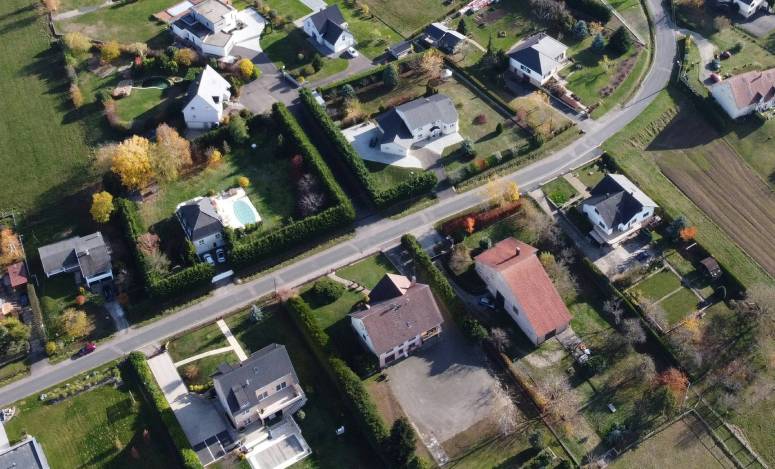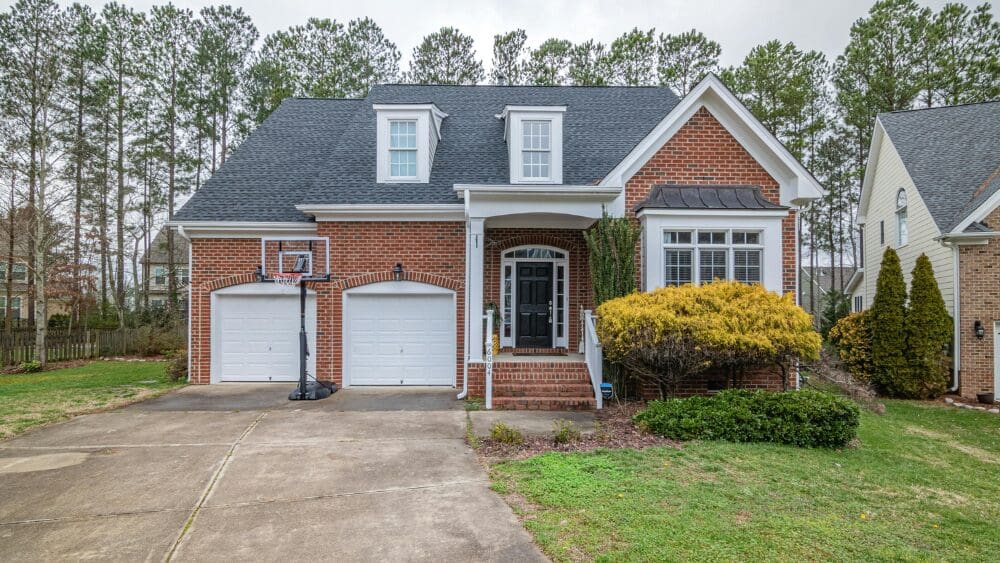
If you theoretically took a house from a regular piece of land and plopped it in front of a lake, how much more would it be worth? And how can this knowledge help you price a lakefront home that you’re ready to put on the market? To find out, we dug into the deep library of empirical research on lakefront property values and spoke with Kimberly Nemeth, a longtime real estate agent serving the Buffalo, New York, area, who specializes in waterfront properties. Here’s what we learned about how gorgeous views, a place to put a boat, and swimming ‘til your heart’s content translate to property value, and why properties even on the same lake can command a range of prices. Although waterfront properties fluctuate in price like the rest of the real estate market, they consistently sell at a higher price than homes that are not on the water, according to a 2018 study of more than 1.2 million residential properties nationwide by property valuation firm Collateral Analytics. In Canyon Lake, California, a city and gated community on the Canyon Lake reservoir, single-family lakefront homes sold at just over $250 per square foot in 2017 compared to roughly $200 per square foot for homes off the water. Comparing data as far back as 2005, this analysis found that lakefront homes and homes not on the lake in this area maintain this pricing relationship. At a high point in 2006, lakefront homes sold for roughly $400 per square foot whereas homes not on the lake sold for about $250 per square foot. At a low point in 2009, lakefront homes sold for roughly $180 per square foot whereas homes not on the lake sold for about $100 per square foot. Although some studies say the median value of all waterfront property is 116% higher than that of all homes nationwide, other research shows that all bodies of water aren’t coveted equally. Oceanfront properties are valued at nearly 45% higher than homes not on the water but in the same ZIP code, according to the Collateral Analytics analysis of prior property value research. Lakefront homes were shown to have a 25% price premium while riverfront homes showed a premium of about 24%, the company’s analysis found. The main reason lakefront homes sell for more is that, given the choice, almost everyone would opt to live on a lake, and yet the number of lakefront properties available is very limited. “Lakefront properties are definitely more valuable because there are just not as many homes on the water,” says Nemeth. “Some people just like to see and feel the wind and the breeze, look at the water. It’s calming.” While homeowners living on a lakefront also can have additional expenses, such as docking fees, “higher-than-average” homeowners insurance, and flood insurance if the property is in a flood zone — these extra costs and hassles haven’t precluded the popularity of lakefront living. Nemeth said that a lakefront location in her area adds anywhere from $50,000 to $100,000 to a home’s value. But that depends on several variables, such as: A home with a partially obstructed water view could net 10% to 30% more than a home in a similar price range and location, according to data from the real estate research company Greenfield Advisors of Seattle, Washington. One with an unobstructed view of a lake or an ocean can increase the value of a home worth $500,000 to $1 million or higher. When pricing a home, Nemeth said she also considers whether the whole house takes advantage of the view or if it’s only partial, such as from a living room or master bedroom. Living near a large lake can boost your property value when the lake’s water quality is good, according to a comprehensive review of surface water quality and its effect on property values published in the journal Sustainability in 2017. Researchers noted that algae blooms over several years had a negative impact on the sales prices of single-family homes surrounding four Ohio lakes. By comparison, just a one-foot increase in water clarity among 74 lakes in North Ontario, Canada, resulted in sales prices about 2% higher. Whether you can actually access the water — and how easily you can access it — will impact overall property value. If you can open the slider door and saunter across your private yard to dip your toes in the lake, that’s worth a lot. If the path to the water involves a longer or steeper walk, that’s not going to be as valuable. In addition, “It depends on what the utility of the water is,” said John Huston, a professional appraiser in St. Petersburg, Florida, who serves three counties and has appraised more than 3,800 properties since 1999. Being situated near a canal or channel can provide a lovely view, he said, but depending on the weekend traffic, “It’s tough to get the boat in and out.” Lakefront homes can list at a higher price if they have a dock or pier that follows municipal guidelines and permits, enticing buyers to boat, fish, swim, and enjoy other water activities. When it’s time to sell your lake home, know that buyers will be comparing yours to other lakefront properties. Just like with homes not on the water, they respond best to a home that’s in good condition and has a reasonable price for the perceived value. Here are three areas where you can maximize the value of your lakefront home: Homes on any body of water take a beating because of the moisture. Although a lake house doesn’t have the issues that ocean property does with saltwater, its fixtures can be prone to rust and erosion. Here’s how to get ahead of these issues: “Wood docks during our winters can get destroyed with the ice buildup,” Nemeth said. “If you’re a boater and looking for a house where the dock is destroyed, you’re not going to want to pay that much money.” Because some municipalities restrict how much homeowners can expand or renovate a waterfront home, it’s important to highlight what you’ve done, especially in regard to environmental concerns. For instance: Unlike wood, brick and fiber-cement siding are durable under damp conditions. Fiber-cement siding can resemble wood but has a low moisture content, doesn’t rot, and resists deterioration from moisture and UV rays. (It needs refinishing about every 15 years, according to home improvement expert Bob Vila, but it’s otherwise low maintenance.) Pella Windows & Doors of Southeast Michigan and Northwest Ohio points out that its fiberglass windows provide additional protection against the seasonal weather from Lake St. Clair and the Great Lakes. A neglected lakefront shoreline will erode each year, says the home service directory Angie’s List. Some ways to control erosion include a retaining wall, a seawall, a rip rap barrier consisting of secured fieldstones, or a buffer zone or wetland area of natural grasses and plantings. Work with your real estate agent to paint a picture of what your lakefront home has to offer and what emotions you want to evoke, both in listing photos and in any staging. A lakefront home practically sells itself if it’s priced right and it’s been well-maintained, especially on the outside. “I don’t see lakefront homes depreciating in value anytime soon,” Nemeth said. “They hold their value really well.”Lakefront pricing by the square foot
How does a lakefront compare to other bodies of water?
Why are lakefront properties more expensive?
Judging the desirability of a particular lakefront
The view:
Proximity to the water:
Water access:
Outdoor amenities:
Pricing your lakefront home to sell: Here’s what to keep in mind
Maintenance:
Improvements:
Is your lake home’s exterior resistant to moisture?
Are the windows energy-efficient as well as suited for the elements?
Don’t forget the shoreline!
Marketing:



